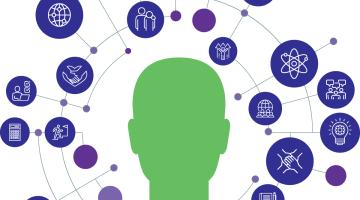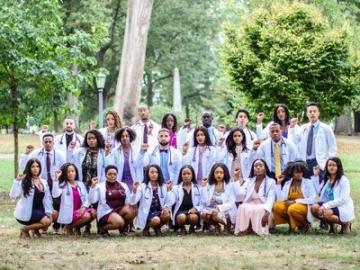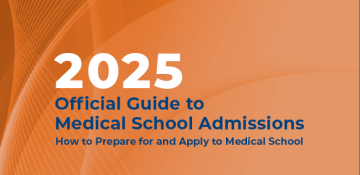New section
"My personal statement was a winding journey of how I went from being a bewildered high school graduate, unsure of my place in the world, to being certain I wanted a career as a linguist in the Air Force, to ultimately figuring out I belonged in medicine. I highlighted major forks in my journey focusing on different character traits that I developed with each experience."
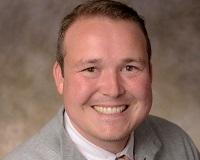
Med School: Northwestern University Feinberg School of Medicine
Expected Graduation Year: Class of 2023
College & Major: University of Arizona, Physiology, 2018
Editor’s Note: The opinions expressed in this article are those of the author and do not necessarily reflect the opinions, positions, or the polices of the AAMC or its members.
New section
Background
- Jon joined the U.S. Air Force after high school and became a Chinese linguist.
- During a deployment to Afghanistan, Jon was first inspired to go into medicine when he volunteered at the Combat Support Hospital at Bagram Air Base.
- Upon returning to the United States, Jon continued his military service while taking night and weekend classes at a local community college to fulfill premed requirements.
- After separating from the Air Force, Jon began taking classes at The University of Arizona. While there, he acquired a research position working with a professor who would eventually become his mentor.
MCAT® Score/GPA/Coursework
Jon's academic record spanned nearly 15 years and included coursework from several different colleges and universities. Initially, he worried that his academic record would be viewed negatively due to the number of times he transferred schools; however, it actually helped him demonstrate resilience. “Given his perseverance, dedication, and grit thus far, we knew he would find his way at Feinberg,” said Dr. Kundu, the Associate Dean for Admissions at Northwestern Feinberg School of Medicine. “Jon also pursued his education through the lens of being in the military, which showed he could juggle multiple responsibilities professionally while being a student,” she said.
Jon took advantage of the full-length practice MCAT®exams offered through his university’s premed advising office and the Office of Diversity and Inclusion. “I took as many of these as I could, and after each test, I carefully reviewed my scores using my areas of weakness as guidance for what I needed to focus on studying before the next practice test,” said Jon. “By the time the day for my MCAT exam came around, I felt comfortable with not only the test format but also my knowledge.”
Experiences
After graduating from high school, Jon began taking classes at a community college where he met a number of military linguists who inspired him to enroll in the U.S. Air Force and pursue linguistic work.
It wasn’t until an unexpected deployment to Afghanistan that Jon thought about a career in medicine. He began volunteering at the combat support hospital in Bagram Air Base where he witnessed doctors treating wounded soldiers.
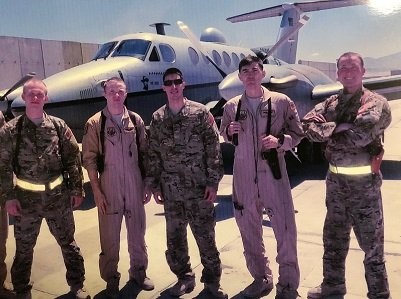
“One day, a physician and I were reflecting on the care of a wounded soldier from the previous night’s medevac, which I had overseen. His right leg had been crushed by a massive armored truck resulting in rhabdomyolysis (when muscle tissue breaks down and then leads muscle fibers being released into the blood stream. This can damage the kidneys). I recounted a similar experience I had with an Airman who had suffered exercise-induced rhabdomyolysis. Confirming my growing interest, the physician asked, ‘Have you considered a career in medicine?’”
Upon returning from his deployment, Jon was placed in charge of his base’s Language and Cultural Learning Center where he was faced with the daunting challenge of bringing one of the lowest performing linguist units up to standard. Instead of focusing solely on classroom instruction, Jon developed an innovative, community-focused method of implementing language training. He established local partnerships so participants could practice their language skills while volunteering in the community. Jon organized groups of linguists to teach at elementary schools and volunteer as translators at a monthly free border clinic. Using this immersion method, the Language and Cultural Learning Center program soon became the highest performing in the Air Force, eventually becoming the model for other programs.
After being honorably discharged from the Air Force in 2016, Jon dedicated his time to pursuing a career in medicine. He began taking classes towards a bachelor’s degree in physiology at the University of Arizona. During his time there, he served as a research assistant in Dr. Dawn Coletta's laboratory, in the Department of Medicine, Division of Endocrinology, where he investigated genetic risk factors of metabolic disorders in the Mexican population of Southern Arizona. At the same time, he volunteered as a clinical research associate in the emergency department, screening emergency and intensive care patients for intake in several clinical research studies.
Personal Statement
“My personal statement retold the winding journey of how I went from being a bewildered high school graduate, unsure of my place in the world, to being certain I wanted a career as a linguist in the Air Force, to ultimately figuring out I belonged in medicine,” said Jon. “I highlighted major forks in my journey focusing on different character traits that I developed with each experience.”
Jon’s compelling narrative also made him stand out from other applicants. “He described his zigzagging path through his education in a thoughtful and self-reflective way through his personal statement and essays. We felt we should absolutely meet him,” said Dr. Kundu.
Letters of Evaluation
Jon selected letter writers who knew him well from various settings. He thought about what qualities he wanted to demonstrate through his letters, and then selected individuals who could speak to them. “I chose writers who had seen me work in a team, as a leader, and on both professional and academic projects,” he said. “For example, my Air Force Flight Chief, Chief Master Sergeant Breanna Oliver, knew how I worked on teams and in leadership positions. These were qualities that I wanted highlighted on my application.”
Jon also selected writers who knew his accomplishments in academics and research. “The faculty advisor to the Veterans Health Sciences Club I founded could speak to how I interacted with peers who needed my help. And Dr. Jorge Gomez, the Director of Translational Research at the Center for Elimination of Border Health Disparities, he spoke to my commitment to bringing health to the underserved.”
Jon’s letters of evaluation stood out to the admissions team at Northwestern University Feinberg School of Medicine. Dr. Kundu commented, “From Jon's personal statement and letters of recommendation, we learned about his ability to juggle multiple competing responsibilities from a demanding work schedule, full-time academic course load, and family responsibilities.” Further, Dr. Kundu says, “He upheld these responsibilities all while being involved in community service. He became a well-respected mentor with others seeking his guidance. We learned of his kindness, his altruism, his humility, and his work ethic.”
Interview
In order to prepare for his interview, Jon asked his wife to run through some practice questions with him. He also participated in mock MMIs (multiple mini interviews) offered by his university, reviewed his application materials, and reflected on his past experiences. Jon participated in three interviews: two with faculty and one group interview that included a fourth-year medical student. “While the questions asked in each interview were different, they all seemed to have the common goal of getting to know me,” said Jon. “I felt the interviews were very conversational as we talked about my experiences in life, school, and research. The interviews gave me a chance to showcase my strengths, and how I saw those strengths manifesting in my role as a medical student and my future career as a physician. Equally important, the interviews gave me a chance to discuss strengths and weaknesses of the program, so that I could find the right fit for me.”
Jon’s interview also confirmed for admissions faculty that he was a good fit for Feinberg. They shared that “meeting Jon allowed our admissions committee to get to know him more deeply, and we were impressed by his service to his country and his family. His life skills and leadership experience were noted to bring immense diversity to our incoming medical school class.”
Jon on Why He Chose the Feinberg School of Medicine
Jon chose the Feinberg School of Medicine because of its emphasis on both research and clinical practice. Furthermore, the financial aid office was able to adjust his aid package in response to his financial concerns. “I was worried about the cost of medical school, especially since my GI Bill wouldn’t last to cover the entire program. On top of that, my wife was in graduate school so we would both be out of work living in separate cities while we pursued our advanced degrees. I discussed my situation with the financial aid office, and they quickly offered me a scholarship and pointed me in the direction of other resources. This has made my transition to medical school very manageable.”
Another factor that attracted Jon to Feinberg was the students’ emphasis on wellness and work-life balance. The night before his interview Jon attended a dinner with current students and other applicants organized by the Office of Diversity and Inclusion. “The medical students I met, regardless of what year they were in, were the happiest of any of the schools I interviewed at,” said Jon. “I was especially intrigued by the organized non-academic interest groups such as the annual variety show, known as In Vivo, where students sang, danced, and laughed the stressors of medical school away.”
The Feinberg School of Medicine on Why They Chose Jon
The Feinberg Admissions Committee chose Jon because they felt his experiences and future goals aligned with the school’s mission. His leadership skills, passion for research and clinical experiences all demonstrated he would be a great fit for Feinberg.
“The summation of Jon's medical school portfolio and interviews lead the admissions committee to feel strongly that Jon would be a great addition to the field of medicine, and we wanted him to be a part of Feinberg,” said Dr. Kundu. “We also felt we could nurture his future medical career with our robust clinical training, opportunities to explore research in depth, and commitment to community engagement. Our mission was aligned to Jon's experience and future goals.”
New section
Highlighted Competencies
Note: This section helps to illustrate how multiple competencies can be demonstrated across many experiences, activities, and parts of your application.
Shows a commitment to something larger than oneself; demonstrates dedication to service and a commitment to making meaningful contributions that meet the needs of communities.
Volunteered at a combat support hospital; engaged in collaborative and leadership behaviors that were supportive of the community.
Demonstrates accountability for performance and responsibilities to self and others; prioritizes and fulfills obligations in a timely and satisfactory manner; and understands consequences of not fulfilling one’s responsibilities to self and others.
Worked as a research assistant in the department of medicine and the emergency department while taking classes.
Military experience; developed an innovative, community-focused method of implementing language training.
Practices continuous personal and professional growth for improvement, including setting and communicating goals for learning and development; reflects on successes, challenges, and mistakes; pursues opportunities to improve knowledge and understanding; and asks for and incorporates feedback to learn and grow.
Examined and improved his weaknesses with MCAT exams.
Uses logic and reasoning to identify the strengths and weaknesses of alternative solutions, conclusions, or approaches to problems.
Professional experience, coursework.
Effectively conveys information to others by using written words and sentences.
Personal statement, writing related to research assignments.
